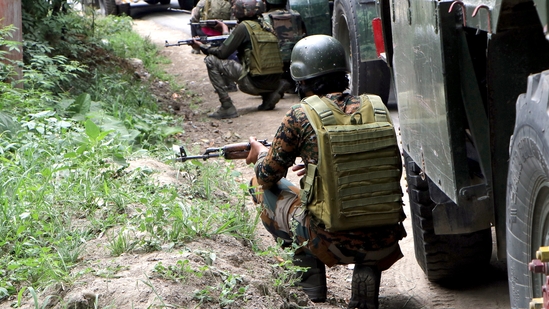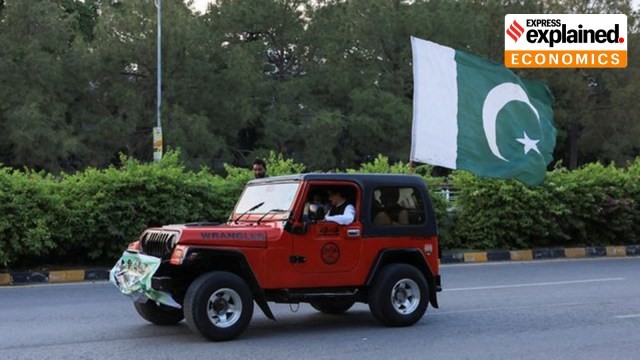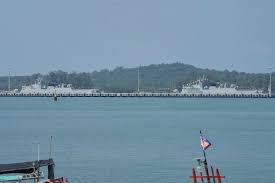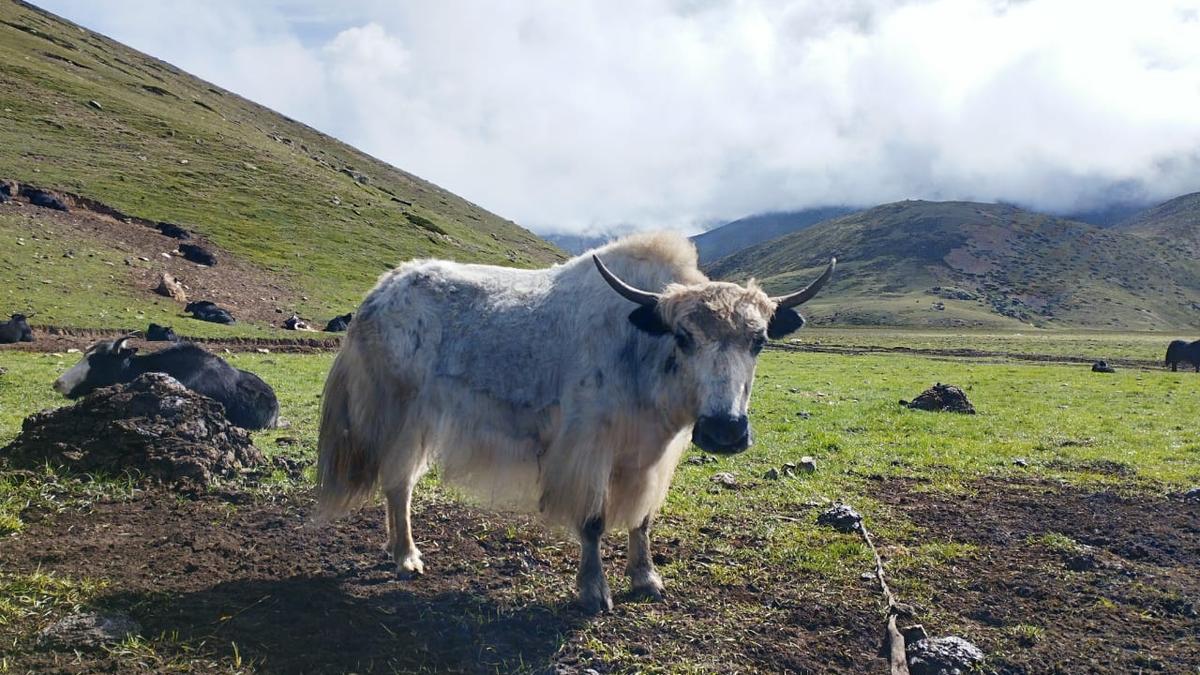Operation Keller

- 16 May 2025
In News:
On 13 May 2025, the Indian Army, in coordination with the J&K Police and CRPF, launched Operation Keller, a targeted counter-terrorism operation in the Keller forests of Shopian district, Jammu & Kashmir. The operation led to the elimination of three terrorists, including Shahid Kuttay, the chief of The Resistance Front (TRF) and the alleged mastermind behind the Pahalgam terror attack.
Key Objectives:
- Neutralise terrorists affiliated with The Resistance Front (TRF), a proxy of Lashkar-e-Taiba (LeT).
- Specifically eliminate Shahid Kuttay, involved in the April 2025 Pahalgam attack that killed 26 civilians.
- Secure volatile forested zones in South Kashmir to prevent future infiltrations and retaliatory threats.
Details of the Operation:
- Launch Date: 13 May 2025
- Location:Shoekal Keller forest area, Shopian district, J&K
- Conducted By: Indian Army (Rashtriya Rifles), J&K Police, CRPF
- Method: Intelligence-based search and destroy mission
- Outcome: Elimination of three hardcore terrorists after a fierce gunfight; operation ongoing.
Pahalgam Terror Attack Link:
- Posters announcing ?20 lakh bounty per terrorist involved in the Pahalgam killings were circulated in Pulwama.
- J&K Police released sketches identifying the three LeT-linked terrorists responsible.
- Operation Keller targeted the network allegedly behind this attack.
About Shopian District:
- Location: Southern Kashmir Valley; bordered by Pulwama, Anantnag, Kulgam, and PirPanjal mountains.
- Elevation: ~2,146 metres; experiences harsh winters (up to −7°C).
- Economy: Agriculture-based, especially apple orchards.
- History:
- Upgraded to district status in 2007 (earlier part of Pulwama).
- Lies along the historic Mughal Road connecting Lahore and Srinagar.
- Name Origin: Possibly from “Shah-payan” (royal stay) or “Shin-van” (snow forest).
Extended Fund Facility (EFF)

- 16 May 2025
In News:
Recently, the IMF Executive Board approved a $1 billion disbursement to Pakistan under the Extended Fund Facility (EFF). This brings total disbursements under the current EFF arrangement to $2.1 billion out of a total planned support of $7 billion.
What is the Extended Fund Facility (EFF)?
- Governed by: International Monetary Fund (IMF), part of the Bretton Woods Institutions.
- Purpose: To support countries facing medium-term balance of payments problems caused by structural economic weaknesses.
- Nature of Support:Loan (not a grant or aid), with extended repayment periods.
- Tenure: Typically spans over three or more years, with phased disbursements.
- Objective: Enables countries to implement structural reforms such as:
- Broadening the tax base
- Strengthening financial institutions
- Reducing fiscal deficits
- Managing inflation
Eligibility for EFF:
To qualify, countries must:
- Exhibit persistent balance of payments stress
- Have deep-rooted economic weaknesses (e.g., poor governance, low investment, weak tax systems)
- Show a willingness to undertake IMF-monitored reforms
Pakistan’s Economic Situation:
- Stagnant GDP: Estimated at $338 billion in 2023, lower than in 2017.
- High Inflation: Averaging over 20% between 2020–2024.
- Frequent Borrowing: Pakistan has received 28 IMF loans in 35 years, and also borrows from:
- China
- UAE and Saudi Arabia
- ADB, IDB, Paris Club, Nordic Development Fund
Key Challenges:
- Economic mismanagement
- Low savings and investment
- Infrastructure gaps
- Low female workforce participation
- High population growth
Why Did IMF Approve the 2025 Tranche?
The IMF approved the tranche based on positive macroeconomic developments:
- Reduced inflation: Down to 0.3% in April 2025
- Improved forex reserves
- Fiscal reforms: Implementation of the FY2025 budget and Agricultural Income Tax
- Credible reform measures: IMF noted Pakistan’s “significant progress” in restoring economic stability.
Golden Dragon 2025

- 16 May 2025
In News:
In May 2025, Cambodia and China launched their largest-ever edition of the annual Golden Dragon military exercise, featuring coordinated land, sea, and air operations. This drill underscores deepening military and strategic cooperation between the two countries amidst shifting geopolitical alignments in Southeast Asia.
About Golden Dragon Exercise:
- Inception: Initiated in 2016, Golden Dragon is a bilateral military exercise between China and Cambodia.
- Objective: Strengthens defence ties, capacity building, and joint operational readiness.
- 2025 Theme: Focuses on joint counter-terrorism operations and humanitarian relief efforts, projecting it as a peace-oriented and technologically advanced drill.
Key Highlights
- Venue: Conducted at Ream Naval Base, located on Cambodia’s southern coast near Sihanoukville.
- Military Domains: Involves exercises across land, sea, and air.
- Technological Showcase:
- Reconnaissance and attack drones
- Surgical robots
- Robot dogs
- These technologies highlight an evolution toward AI-driven and robotic warfare capabilities.
Strategic and Geopolitical Significance:
- Ream Naval Base Expansion:
- China has funded upgrades to this naval base, raising concerns about possible dual-use military capabilities and Beijing's expanding naval footprint in the Gulf of Thailand.
- Cambodia denies hosting any exclusive foreign military presence but allows docking of ships from friendly nations, including recent arrivals from Japan, Vietnam, and China.
- China-Cambodia Relations:
- Cambodia is considered China’s closest ally in Southeast Asia.
- China is a major economic and military benefactor, with growing influence in Cambodian infrastructure and defence.
- Counterbalance to U.S. Influence:
- The drill coincides with the U.S.-led Balikatan exercise, which includes forces from the U.S., Philippines, Australia, and Japan.
- Reflects the strategic competition between China and the U.S. in the Indo-Pacific region.
- “String of Pearls” Strategy:
- China’s involvement in ports like Ream (Cambodia), Hambantota (Sri Lanka), and Gwadar (Pakistan) reflects its strategy to establish logistical and strategic outposts across the Indian Ocean Region (IOR).
India assembles first Chromosome-Level Genome of the Yak

- 16 May 2025
In News:
India has achieved a significant breakthrough in livestock genomics with the successful assembly of the first-ever chromosome-level genome of the Indian yak (Bos grunniens). The initiative was led by the Indian Council of Agricultural Research (ICAR) through collaboration among four of its premier institutes.
Key Institutions Involved:
- ICAR-National Research Centre on Yak (NRC-Yak), Dirang, Arunachal Pradesh
- ICAR-Indian Institute of Agricultural Biotechnology (IIAB), Ranchi
- ICAR-Central Institute for Research on Cattle (CIRC), Meerut
- ICAR-Central Institute for Research on Cattle (CIRC), Nagpur
Importance of the Indian Yak:
- Known as the “Ship of the Himalayas,” the domestic yak is crucial to the livelihoods of high-altitude pastoral communities.
- Provides meat, milk, fibre, dung for fuel, and is used for transport in rugged terrain.
- Found at elevations above 7,000 feet in regions like Ladakh, Sikkim, Himachal Pradesh, Arunachal Pradesh, and Jammu & Kashmir.
- Exhibits extraordinary cold tolerance, making it a valuable model for studying climate adaptation.
Scientific Achievement:
- Researchers used long-read sequencing technology and advanced bioinformatics tools to develop a chromosome-level genome assembly.
- This allows precise gene mapping, facilitating identification of genes related to:
- Cold tolerance
- Disease resistance
- Milk and meat quality
- Reproductive traits
Benefits and Applications:
- Conservation: Helps counter threats like genetic erosion, climate change, and loss of grazing lands.
- Livestock Improvement: Enables targeted breeding programs for improved productivity and adaptability.
- Scientific Research: Offers comparative insights into bovine genetics and facilitates allele mining for key traits.
- Sustainable Development: Aids in the socio-economic upliftment of yak herders by improving livestock performance.
About ICAR-NRC on Yak:
- Established in 1989, located in Dirang, Arunachal Pradesh.
- Premier institution for research on yak husbandry, health, nutrition, and genetics.
- Works to preserve the unique genetic resources of Himalayan livestock.
Desalination Technology
- 16 May 2025
The Defence Research & Development Organisation (DRDO), under the Aatmanirbhar Bharat initiative, has successfully developed a high-pressure, nanoporous, multilayered polymeric membrane for seawater desalination.
Developing Agency:
- The technology was developed by the Defence Materials Stores Research & Development Establishment (DMSRDE), Kanpur, a DRDO laboratory.
- It addresses the Indian Coast Guard's (ICG) operational needs aboard Offshore Patrol Vessels (OPVs), especially to counter instability caused by chloride ions in saline water.
Salient Features of the Technology:
- Indigenous development completed in a record time of 8 months.
- Successfully tested in existing desalination plants aboard ICG vessels.
- Undergoing 500-hour operational testing before final clearance by ICG.
- Can be adapted for use in coastal areas for civilian desalination purposes as well.
Strategic Significance:
- Enhances onboard freshwater self-reliance for maritime security forces.
- Reduces dependency on imported technologies.
- Contributes to India’s self-reliance in critical defence and water technologies.
Desalination Technology: Key Concepts
What is Desalination?
Desalination is the process of removing dissolved salts and minerals from seawater or brackish water to produce potable or industrial-grade water.
Main Technologies Used:
- Reverse Osmosis (RO):
- Pressure-driven membrane filtration.
- Uses semi-permeable membranes to separate salts from water.
- Thermal Desalination:Involves evaporation followed by condensation to obtain fresh water.
Working of RO Desalination:
- In osmosis, water naturally moves from low solute to high solute concentration across a membrane.
- In reverse osmosis, external pressure is applied to force water from high solute (saline) to low solute (freshwater) side.
- RO membranes allow only water molecules to pass, filtering out salts and impurities.
- Seawater with ~35,000 ppm Total Dissolved Solids (TDS) is reduced to 200–500 ppm, making it drinkable.
